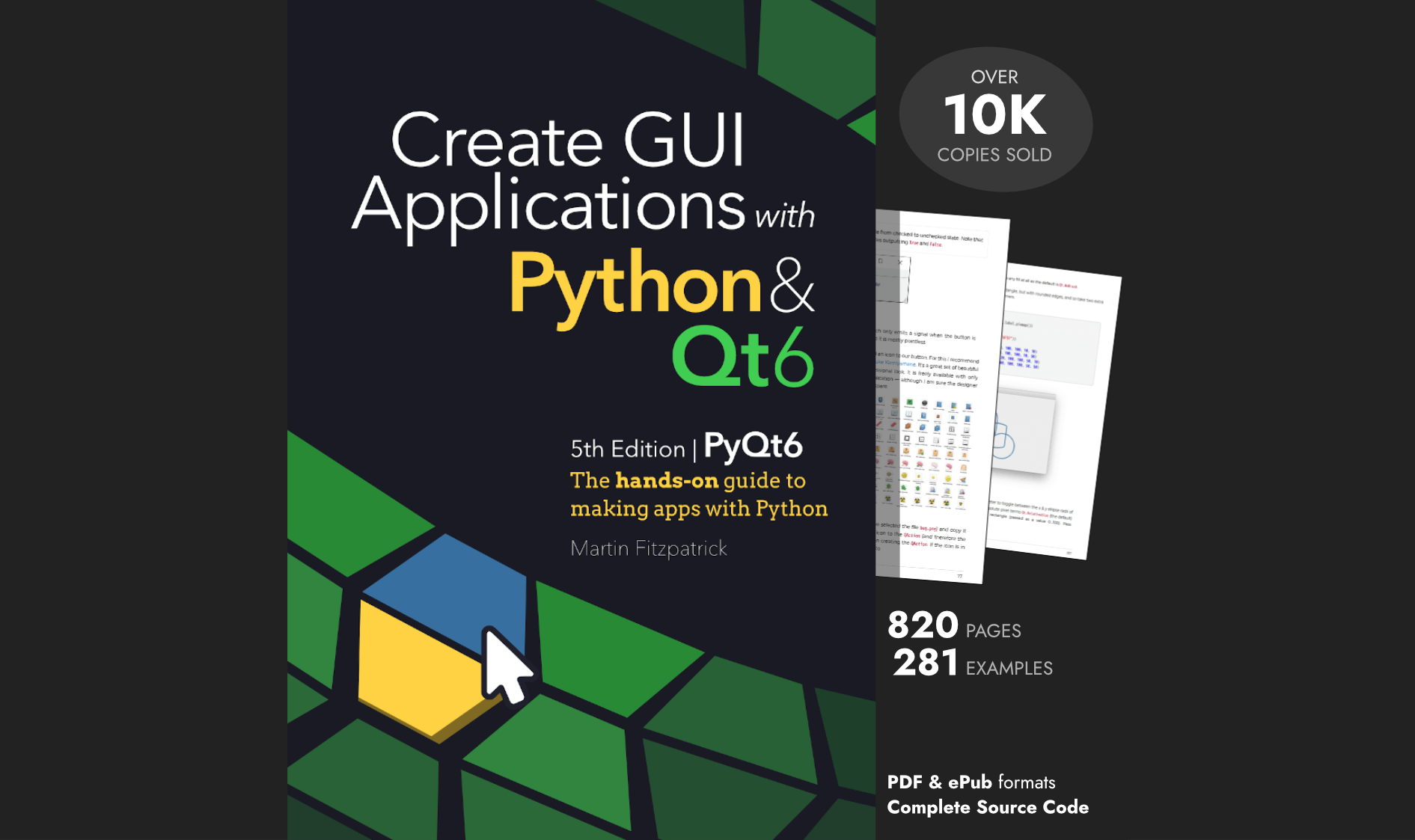Scoodood | 2020-08-15 00:53:22 UTC | #1
Hi @martin, I was trying to run the sample code themes\modern.py but I get the following error:
import qtmodern.styles
import qtmodern.windows
...
ModuleNotFoundError: No module named 'qtmodern'
I believe the file qtmodern.py is missing.
Best Regard
martin | 2020-08-16 14:57:13 UTC | #2
Yep, qtmodern is a separate library you need to install with pip. Just the normal pip install qtmodern should do it.
I'll check the explanation as maybe this isn't made clear enough.
Packaging Python Applications with PyInstaller by Martin Fitzpatrick — This step-by-step guide walks you through packaging your own Python applications from simple examples to complete installers and signed executables.
Scoodood | 2020-08-16 03:38:05 UTC | #3
Your ebook didn’t mentioned anything about the qtmodern. But the code is from your zip file, under the theme folder. Most of the code are related to that chapter, and I thought qtmodern Is a file. Now I know it is library. Thanks
martin | 2020-08-16 14:29:17 UTC | #4
Create GUI Applications with Python & Qt6 by Martin Fitzpatrick — (PySide6 Edition) The hands-on guide to making apps with Python — Over 15,000 copies sold!
The (small) bit about Qt modern is on page 199 under "3rd Party Styles" in the "16. Styles" chapter. There isn't any code shown in the book though.
Scoodood | 2020-08-16 15:01:51 UTC | #5
Thanks @martin, I found it now, it's on page 184 on mine.

